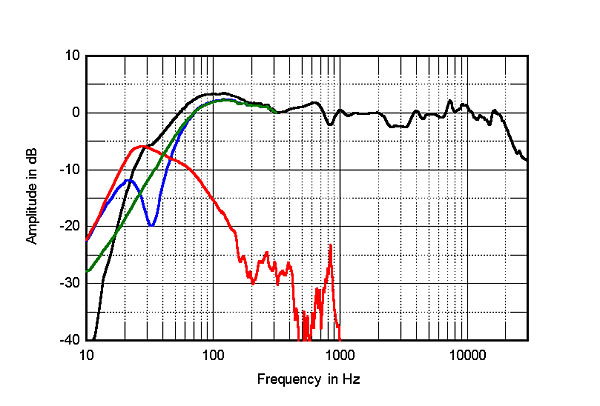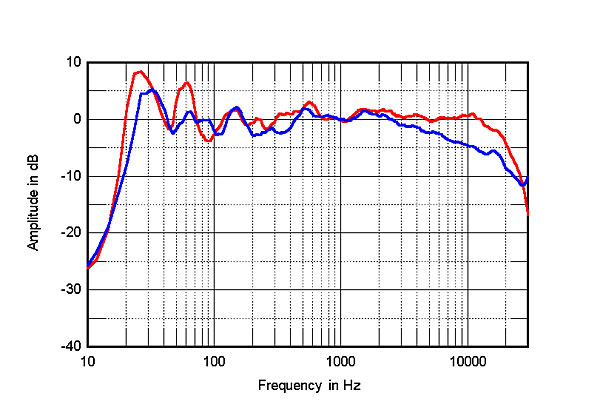I wonder when it was acknowledged as an issue, Linkwitz refers to the Wireless World article of 1976 which Scottmoose says is derived from some of the BBC's earlier researchA competent recording process will already address this
I think Pano addressed this question earlier. I also belive the competent engineers on the recording side can address the issue, even if they don't know the cause. To help myself become a better designer of loudspeakers, I bought "Critical listeni skills for audio professionals" training cd. It was meant for recording/mastering engineers. These guys know what they're doing.
Sorry for the extra post (tapatalk). This is just one of many effects. I've commented in past how tweeter under woofer could help compensate for hrtf that places high frequencies above lower, and also how crosstalk in stereo distorts the tonal perction due to head shadowing (please see my excel spreadsheet in Panos thread). There are allot of people working in audio taking ideas well beyond the public discourse generously shared by SL.
Sure, that's a straight forward and common approach among audiophiles. I think we all understand its merits.My aim is to convert the electrical waveform into an acoustic one as accurately as possible.
It may be of secondary concern to you, but to many it's a primary concern. We all have our own preferences, interests and goals. And I don't find realism to be largely beyond my control, most recordings I own contain a wealth of realistic detail. Revealing that realistic detail is within my control.If the result sounds 'realistic' or not is a secondary concern and depends largely on factors beyond my control.
If a 3K dip is need to achieve a more realistic result, I'll use it. (It isn't always in my systems).
Since for the most part you cannot have a unadulterated recording ( mic placement, mic fr, preamps, eqs, compressors, effects, ... ) isn't it the (next) most realistic representation if you play it flat, or let`s say like the engineer, etc. intended. Playback flaws in his own equipment disregarded.
Have you guys noticed, that quite many (almost all) loudspeakers have a 3kHz dip in power response? Many of these are well appreciated designs and those "lacking this" are not ( eg. KEF) and are doomed to sound too bright. A billion flies can't be wrong...
Dynaudio Contour 20 loudspeaker Measurements | Stereophile.com

Dynaudio Contour 20 loudspeaker Measurements | Stereophile.com

Juhazi, that seems to imply that although the effect is well known and often compensated for in the mix where necessary, it's possibly not accounted for enough. Has the modern listening environment changed, is it now too reflective with laminate flooring and fewer soft furnishings, too minimalist, lacking diffusers like bookshelves and random clutter?
I have noticed, that in many room RT/decay plots 1-4kHz decay is louder and longer that other frequencies. Espcially in houses with wooden-framed walls that suck bass and low mid frequencies.
http://www.diyaudio.com/forums/mult...aborative-speaker-project-42.html#post3744383
http://www.diyaudio.com/forums/mult...aborative-speaker-project-42.html#post3744383
How educational to hear that SL is ignorant re audio. Maybe too much time hanging out with NP?
I would not want to imply SL is ignorant re audio. However he does state he likes to make his own recordings of classical events for his own listening pleasure.
He does that with microphones at ear positions. In this case he'd have to master the recording to get the maximum out of it for Stereo listening. The best he "could" do is EQ the excess energy at ~3k with a mid/side equaliser. He takes a short cut by equalising the speaker FR.
I bet the recordings he makes do wonders on headphones though. That may be why he does not want to alter the recording itself. Listening or compatibility with mono could be another reason. A mono speaker would not suffer from this same phenomenon.
SL has experimented with centre channels too for stereo material. Basically he is as curious as a lot of us are. Why would he be different from any of us?
I don't see the problem here, either you are curious enough to try, or you are not. Nobody would get harmed by trying.
Create your own recording with 2 mics at the ear position. Just like SL does. Next create that dip at 3 kHz. Compare it to doing the same in mid/side processing for playback on stereo. Pick your favourite, how hard can this be?
Also listen to the unaltered recording on headphones for reference.
Stereophile published a review of a nice speaker
GoldenEar Technology Triton Reference loudspeaker | Stereophile.com
Text and measurement are by John Atkinson, and he is enchanted by the speaker's nice presentation of piano an chamber music. In the measurements section we see room response or Triton vs KEF Reference 5. The main difference is that GE's room response is a straight line unlike KEF which slopes down above 2kHz. This comes from exceptionally constant DI, when KEF has more typical slowly rising DI. Both are straight on-axis.
I have ended with almost straight room response with dsp and I like it too. Obviously the KEF has too much energy around 2-3kHz, relative to low bass and upper treble.

GoldenEar Technology Triton Reference loudspeaker | Stereophile.com
Text and measurement are by John Atkinson, and he is enchanted by the speaker's nice presentation of piano an chamber music. In the measurements section we see room response or Triton vs KEF Reference 5. The main difference is that GE's room response is a straight line unlike KEF which slopes down above 2kHz. This comes from exceptionally constant DI, when KEF has more typical slowly rising DI. Both are straight on-axis.
I have ended with almost straight room response with dsp and I like it too. Obviously the KEF has too much energy around 2-3kHz, relative to low bass and upper treble.

- Status
- This old topic is closed. If you want to reopen this topic, contact a moderator using the "Report Post" button.
- Home
- Loudspeakers
- Multi-Way
- 3kHz Psychoacoustic Dip